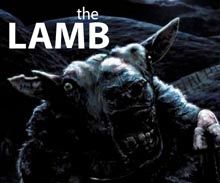“And then there stole into my fancy, like a rich musical note, the thought of what sweet rest there must be in the grave.”
― Edgar Allan Poe, The Pit and the Pendulum
The last time I saw Roger Corman's version of The Pit and the Pendulum (1961) was over 16 years ago. I know this because I wrote a capsule review about it here back when I was using this blog as a notepad. It is not my favorite of the Poe films, but on re-watching it this morning I think it's the film that really nailed the Poe films in place as a cultural force. It's also a film that follows a rule of sequels insofar as its first half is exactly the plot of Corman's House of Usher, and some of the specific story beats are also identical. Corman isn't traditionally thought of as an auteur, but at least while he was making his Poe films, he totally was one. Once the film sheds House of Usher, it winds up gathering a number of other trends loose in the genre and creating a unified theory of Gothic filmmaking circa 1960. It's a hugely influential film, not least because it looks to the Italians and one-ups them at their own game. Corman even borrowed Barbara Steele to drive home the point.




















